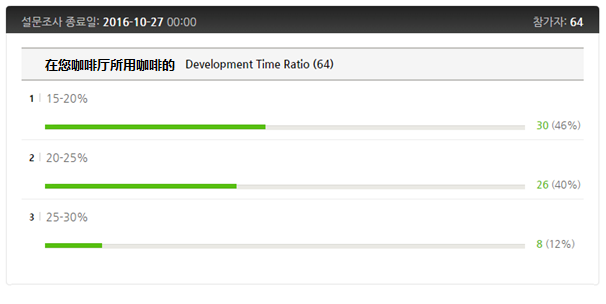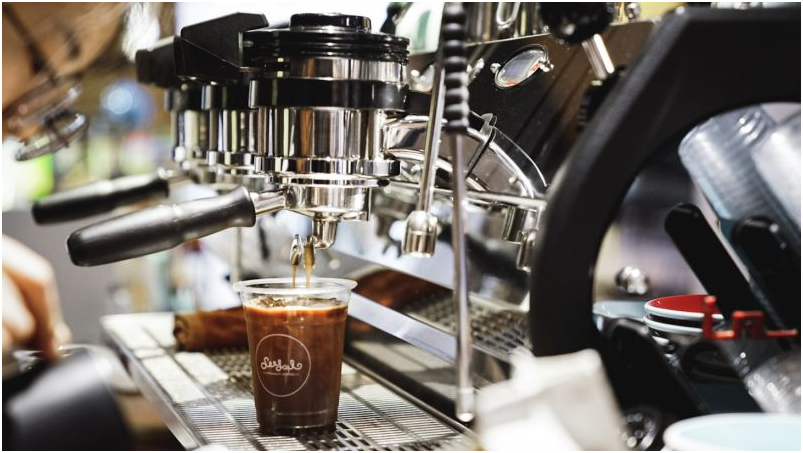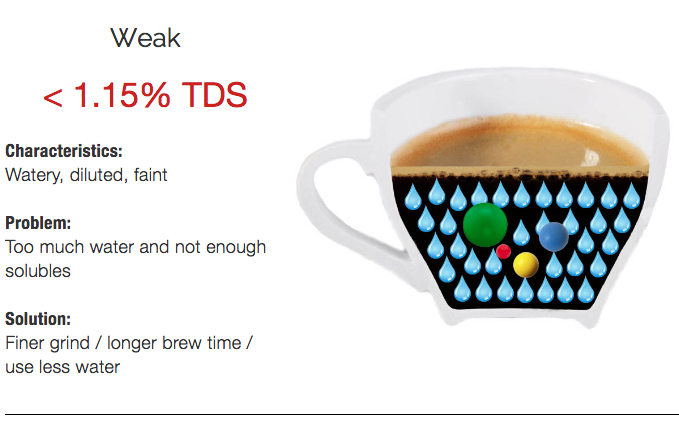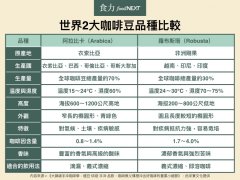What does Single Origin Coffee mean?
Recently, a questionnaire survey was conducted on Black Water Issue's Korean official website, the content is "what is the Development Time ratio of coffee used in your coffee shop?" The results of the survey are as follows.

It can be seen that with the development of boutique coffee in the world, more and more coffee shops adopt shallow roasting (Light Roast).
This trend is also related to the popularity of Single Origin. Many contestants choose Single Origin coffee in different coffee competitions, and many coffee media also talk about Single Origin. Scott, a roaster at Drift Away Coffee, also explained in his article "THE SINGLE-ORIGIN COFFEE TREND IS CHANGING HOW COFFEE'S ROASTED" that light roasting is becoming more and more popular in order to highlight the original personality of coffee (Light Roast).
Now it's time to talk about the definition of Single Origin Coffee. In order to express the meaning correctly, Single Origin in this article will not be translated into a single item, but will be directly translated into the English word 'Single Origin''.)
The literal translation of Single Origin is "single origin". English is "one type of bean from one area of one farm". It can be said to come from the same place of origin. Many people think that the opposite concept of Single Origin is Blend.
In order to make an accurate definition, it is necessary to trace the history of Single Origin words. This word was first used in the 19th century. At that time, Yemen Mohka (Mohka is not the name of the region, but the name of the port) and Indonesian Java mixed coffee beans is one of the most popular coffee nowadays, in order to distinguish it from this mixed coffee, Yemen Mohka coffee is called Single Origin Coffee.
Today, the meaning of Single Origin Coffee used by many coffee companies is similar to that of the 19th century. But the definition of Single Origin in the boutique coffee world is different. Since C.O.E (Cup of Excellence) in 1999, the boutique coffee industry has begun to advocate the importance of farms, so the original definition of single origin, that is, the division of countries, has gradually diluted and changed. So after 1999, they played a more important role than each farm. Although the same country, but according to different planting methods, harvesting methods, processing methods, will produce coffee of different quality.
Entering the 20th century, the outside world gradually came to the concept of 'boutique coffee', and they paid more attention to the role of the farm. So at that time, coffee grown on the same farm was called 'Single Origin Coffee'. After the 20th century, the country no longer became a coffee brand, but the farm became a coffee brand. But the word Single Origin Coffee was not often used at that time.
In 2003, George Howell of SCAA (American Fine Coffee Association) set up George Howell Coffee Company, followed by a coffee roaster in 2004, Terroir Coffee. At that time, George Howell began to use "Single Origin" to introduce the detailed origin of each coffee. Because this word was often used by an outstanding figure in the boutique coffee industry, it soon became a hot word at that time. Since then, the definition of "Single Origin Coffee" includes detailed information about the environment of coffee producing areas, harvesting and processing methods, farmers, etc.
Then in 2005, Doug Zell, the founder of Intelligentsia Coffee in the United States, started the concept of Micro Lot (a specially managed area within the same coffee farm).
In 2007, James Hoffmann defined Single Origin Coffee in more detail by way of processing.
The following content describes the definition of Single Origin Coffee for each year.

Single Origin Coffee (1999): coffee produced on the same farm
Single Origin Coffee (2004): coffee baked with the same curve on the same farm
Single Origin Coffee-The Micro lot (2005): coffee produced in a tightly selected area of a farm. It may not be processed in the same way. Use the same baking curve.
Sigle Origin Coffee (2007): coffee produced with the same roasting curve on the same farm using the same processing method (Processing), regardless of the size of the farm.
In addition to these, there are also Single Origin Coffee-Trademarked Style
Single Origin Coffee-The Microlot
Concepts such as Single Origin Coffee-For Espresso, but not so popular.
Important Notice :
前街咖啡 FrontStreet Coffee has moved to new addredd:
FrontStreet Coffee Address: 315,Donghua East Road,GuangZhou
Tel:020 38364473
- Prev

How do you get rid of coffee from beans?
Following caffeine comments (Wechat official account vdailycom) found that Beautiful Cafe opened a small shop of its own through the water-soluble ingredients of coffee, extraction, TDS intuitive guide (1) articles we know that in coffee bean cells acid, caffeine, paper, melanoid, carbohydrates and many other ingredients are in captivity. In the second article, the water-soluble components of coffee, extraction
- Next

Why is Arabica more advanced? Great declassification of coffee bean varieties in the world
Communication of professional baristas Please pay attention to the food that should be known in the coffee workshop (official Wechat account cafe_style) Arabica flavor and aroma are of good quality and are often used to make fine coffee, while Robusta is easy to grow and has the advantage of low price, mainly used to mix beans or as the main raw material of instant coffee. Author = Choi Rongxia (Coffee MBA of Korea's famous barista college
Related
- Beginners will see the "Coffee pull flower" guide!
- What is the difference between ice blog purified milk and ordinary milk coffee?
- Why is the Philippines the largest producer of crops in Liberia?
- For coffee extraction, should the fine powder be retained?
- How does extracted espresso fill pressed powder? How much strength does it take to press the powder?
- How to make jasmine cold extract coffee? Is the jasmine + latte good?
- Will this little toy really make the coffee taste better? How does Lily Drip affect coffee extraction?
- Will the action of slapping the filter cup also affect coffee extraction?
- What's the difference between powder-to-water ratio and powder-to-liquid ratio?
- What is the Ethiopian local species? What does it have to do with Heirloom native species?

